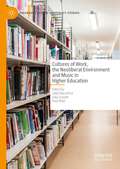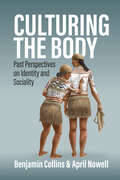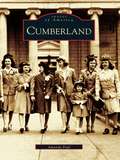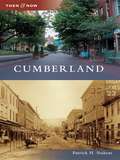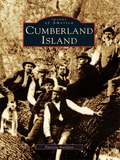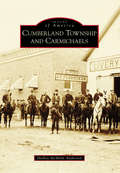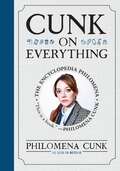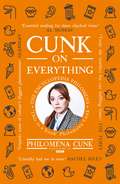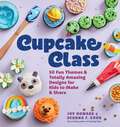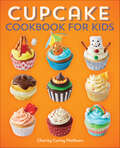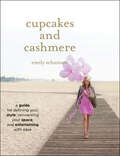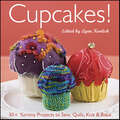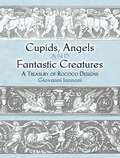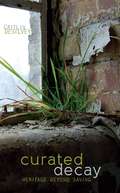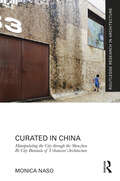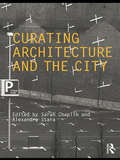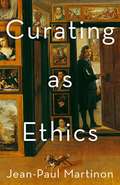- Table View
- List View
Cultures of Work, the Neoliberal Environment and Music in Higher Education (Palgrave Critical University Studies)
by Paul Watt Sally Macarthur Julja SzusterThis edited book considers the impact of neoliberalism on music teaching, research and scholarship in a higher education context. As a subject that bears little resemblance to other university practical disciplines, and fares poorly in a model driven by economics, the book considers whether musicology is a ‘public good’ or a threatened species. It contemplates what musicology can usefully contribute to a paradigm driven by economics, and questions whether it is ever possible to recover an ideal civil subject in neoliberal music academia. Contributions investigate what it means to build music research capacity in innovative ways, such as forging cross-cultural relationships, subverting conventional notions of quality and value, replacing them with knowledges and values that guide Indigenous intellectual traditions, and whether interventions into the legacy of colonialism are truly ever possible in neoliberal higher education institutions that celebrate difference and diversitywhile reinforcing social inequities. The book also explores the relationships between gender and music, music research training and scholarship, and whether the interdisciplinarity championed by the university is ever workable. Finally, it undertakes a cross-disciplinary, new materialist reading of a canonical musical work, offering a radically new perspective. The book will appeal to students and scholars of music education, musicology, higher education studies and the creative arts more broadly.
Culturing the Body: Past Perspectives on Identity and Sociality
by Benjamin Collins and April NowellThe human body is both the site of lived experiences and a means of communicating those experiences to a diverse audience. Hominins have been culturing their bodies, that is adding social and cultural meaning through the use pigments and objects, for over 100,000 years. There is archaeological evidence for practices of adornment of the body by late Pleistocene and early Holocene hominins, including personal ornaments, clothing, hairstyles, body painting, and tattoos. These practices have been variously interpreted to reflect differences such as gender, status, and ethnicity, to attract or intimidate others, and as indices of a symbolically mediated self and personal identity. These studies contribute to a novel and growing body of evidence for diversity of cultural expression in the past, something that is a hallmark of human cultures today.
Cumberland
by Amanda PaulSettled on the banks of the Potomac River, Cumberland has watched time and progress stream through since its days as a fort in the colonial wilderness. Ascending the throne as the "Queen of the Alleghenies," the town became an essential transportation and industrial hub throughout the 19th and 20th centuries. Serving as the starting point for the National Road, the western terminus of the C&O Canal, and an important link along the B&O and Western Maryland Railroads, Cumberland attracted dozens of industries that churned out glass, textiles, tires, and even local brews. Prosperity and growth began to reshape the town, and soon distinct neighborhoods found their own identities while maintaining their strong links to Cumberland as a whole. Despite a post-war decline in its industrial sector, Cumberland continues to be a vibrant town of hardworking people who remain proud of their rich heritage and traditions. Selected from a variety of local sources, photographs in Images of America: Cumberland offer unique and memorable views of the people and places that have defined Cumberland over the past 150 years.
Cumberland
by Patrick H. StakemCumberland is known as the "Queen City of the Alleganys." The National Road, the Baltimore and Ohio Railroad, and the Chesapeake and Ohio Canal pass through the town, which was once an Ohio Company outpost and the westernmost part of the British Empire in North America. Cumberland has changed from a trading site to a manufacturing locality, to a tourist haven over many generations.
Cumberland Island
by Patricia BarefootRich in history, wildlife, and beautiful coastal landscapes, Georgia's Cumberland Island attracts many an island tourist and nature lover. The island's well-preserved marshes, tidal creeks, and dune fields provide this hidden oasis with a rare natural charm. The area is also home to a wide variety of animal species, including loggerhead turtles, bob cats, manatees, and alligators, just to name a few. Though Cumberland is best known for being the nation's largest wilderness island, its history-dating back to the 16th century-also includes a period of use as a mission by the Franciscans. Among its historic sites are the magnificent ruins of Dungeness, the house built by the Carnegie family during the latter part of the 19th century, as well as the romantic Greyfield Inn. This pictorial history of Cumberland Island illustrates the people, places, and events that have shaped the area's cultural and natural history. The island's rare solitude and beauty, which have resulted from conservation and preservation efforts in the area, are captured in this carefully detailed book for all lovers of nature and history to enjoy. Though the island permits only very limited human traffic, these images allow the reader to appreciate the Cumberland landscape-laced with wild animals, pirate coves, English forts, and an African-American "settlement"-from afar.
Cumberland Township and Carmichaels (Images of America)
by Shelley Mcminn AndersonCumberland Township, located in the northeastern portion of Greene County, was one of Pennsylvania’s original townships. The history of this area shows that settlers were here prior to 1760. The settlement known as Old Town was founded in 1767. In 1796, Carmichaels was named in honor of Maj. James Carmichael, a Revolutionary War soldier and pioneer settler. Carmichael had traded his land in what is now the town of Jefferson for land owned by Thomas Hughes along the banks of Muddy Creek in Old Town. Carmichaels became home to the Greene Academy, notably, the first school of higher learning west of the Allegheny Mountains. The Carmichaels Covered Bridge spans Muddy Creek separating Old Town from Carmichaels. Both the Greene Academy and the Carmichaels Covered Bridge are listed on the National Register of Historic Places.
Cunk on Everything: The Encyclopedia Philomena
by Philomena CunkA VULTURE BEST COMEDY BOOK OF 2023 From the star of the &“deeply funny, unexpectedly informative&” (The Daily Beast) Netflix mockumentary Cunk on Earth, a helpful guide covering every single topic in the known universe, from Adam and Eve to Top Gun. Once in a blue moon, a book comes along that changes the world. The Origin of Species. War and Peace. 1984. And now, Cunk on Everything: The Encyclopedia Philomena, by Philomena Cunk. Philomena Cunk is one of the greatest thinkers of the 21st century, and in Cunk on Everything she turns her attention to our biggest issue: why are there so many books? Wouldn't it be better if there was just one? This is that book — an encyclopedia of all human knowledge, delving into not only life's greatest mysteries but our most important political figures and cultural touchstones. Read it, and you'll never have to read another book again.
Cunk on Everything: The Encyclopedia Philomena - 'Essential reading for these slipshod times' Al Murray
by Philomena Cunk'This book is great because it covers everything in existence apart from the 95% of stuff not worth bothering with' Philomena Cunk, star of Charlie Brooker's Weekly Wipe, Moments of Wonder and Cunk on Britain, Cunk & Other Humans'Essential reading for these slipshod times' Al MurrayOnce in a blue moon, a book comes along that changes the world. The Origin of Species. War and Peace. 1984. The World According to Danny Dyer. And now, Cunk on Everything: The Encyclopedia Philomena, by Philomena Cunk.Philomena Cunk is one of the greatest thinkers of the 21st century, and in Cunk on Everything she turns her attention to our biggest issue: why are there so many books? Wouldn't it be better if there was just one? This is that book - an encyclopedia of ALL HUMAN KNOWLEDGE, from sausages to Henry of Eight to Brush Strokes to vegetarian sausages. Read it, and you'll never have to read another book again.'This is a book' Philomena Cunk'Never contact me again' Professor Rupert Delgado, MBE'Cunk for PM' Rachel Riley'. . . book . . .' Guardian'Truly the intellect for our baffling times' The Times'This book is absolutely stupid' The Pool
Cunk on Everything: The Encyclopedia Philomena - 'Essential reading for these slipshod times' Al Murray
by Philomena CunkRead by Diane Morgan as Philomena Cunk, the star of Charlie Brooker's Screenwipe and Cunk on Britain'This book is great because it covers everything in existence apart from the 95% of stuff not worth bothering with' Philomena Cunk'Essential reading for these slipshod times' Al MurrayOnce in a blue moon, a book comes along that changes the world. The Origin of Species. War and Peace. 1984. The World According to Danny Dyer. And now, Cunk on Everything: The Encyclopedia Philomena, by Philomena Cunk.Philomena Cunk is one of the greatest thinkers of the 21st century, and in Cunk on Everything she turns her attention to our biggest issue: why are there so many books? Wouldn't it be better if there was just one? This is that book - an encyclopedia of ALL HUMAN KNOWLEDGE, from sausages to Henry of Eight to Brush Strokes to vegetarian sausages. Read it, and you'll never have to read another book again.'This is a book' Philomena Cunk'Never contact me again' Professor Rupert Delgado, MBE'Cunk for PM' Rachel Riley'. . . book . . .' Guardian'Truly the intellect for our baffling times' The Times'This book is absolutely stupid' The Pool
Cunk on Everything: The Encyclopedia Philomena - 'Essential reading for these slipshod times' Al Murray
by Philomena Cunk*From the star of CUNK ON EARTH - BBC's landmark mockumentary, now on Netflix!*'This book is great because it covers everything in existence apart from the 95% of stuff not worth bothering with' Philomena Cunk, star of Charlie Brooker's Weekly Wipe, Moments of Wonder and Cunk on Earth, Cunk & Other Humans'Essential reading for these slipshod times' Al MurrayOnce in a blue moon, a book comes along that changes the world. The Origin of Species. War and Peace. 1984. The World According to Danny Dyer. And now, Cunk on Everything: The Encyclopedia Philomena, by Philomena Cunk.Philomena Cunk is one of the greatest thinkers of the 21st century, and in Cunk on Everything she turns her attention to our biggest issue: why are there so many books? Wouldn't it be better if there was just one? This is that book - an encyclopedia of ALL HUMAN KNOWLEDGE, from sausages to Henry of Eight to Brush Strokes to vegetarian sausages. Read it, and you'll never have to read another book again.'This is a book' Philomena Cunk'Never contact me again' Professor Rupert Delgado, MBE'Cunk for PM' Rachel Riley'. . . book . . .' Guardian'Truly the intellect for our baffling times' The Times'This book is absolutely stupid' The Pool
Cupcake Class: 50 Fun Themes & Totally Amazing Designs for Kids to Make & Share
by Joy Howard Deanna F. CookKids can perfect their cake-decorating skills and develop their creativity with these adorable and delicious cupcake designs. With step-by-step photos for every stage of the process, bakers ages 8 and up will learn how to create stunning cupcake masterpieces from scratch. This unique format is as simple as 1, 2, 3: 1. Start with the easy-to-follow recipes for the Best-Ever Vanilla or Chocolate Cupcake base and simple buttercream frosting. 2. Learn impressive decorating techniques, like using a piping bag, working with fondant, and creating 3D designs with candy. 3. Put your new skills into practice with detailed instructions for fun designs, including sloths, mermaids, funny faces, and more! Bestselling children's baking authors Deanna Cook and Joy Howard share tips, tricks, and creative designs that are perfect for birthday parties, holidays, and every day! Stickers and punch-out cardstock decorations for making cupcake toppers are also included in this kid-friendly cookbook. This publication conforms to the EPUB Accessibility specification at WCAG 2.0 Level AA.
Cupcake Cookbook for Kids
by Charity Curley MathewsA deliciously easy cupcake cookbook kids 8 to 12 will loveCupcakes are some of the most magical, mouthwatering baked goods—but you don't need fancy equipment or tons of experience to make these fun, frosted treats from scratch. Cupcake Cookbook for Kids gives budding bakers everything they need to become a master cupcake maker, packed with foolproof baking tips, handy decorating techniques, go-to frostings, and easy-to-follow cupcake and frosting recipes.This cupcake cookbook offers plenty of guidance on baking and decorating the perfect cupcake. Try your hand at classic staples like Rich Chocolate Cupcakes before leveling up with more advanced fun-filled cupcakes such as Butterbeer Cupcakes with Butterscotch Frosting. Celebrate by wowing your friends with birthday-themed Melting Ice Cream Cones or getting in the holiday spirit with Going, Going, Gone Snowmen.The Cupcake Cookbook for Kids includes:Outside the box—This cupcake cookbook helps you ditch the premade mixes and learn the ropes of baking cupcakes entirely from scratch, including all the tools, tricks, terminology, and safety tips you'll need.Delight in every bite—You'll find recipes for 40 yummy cupcakes in this cupcake cookbook, ranging from fun classics to more unique advanced cupcakes, with "Ask an Adult" tips if you need extra help.Sprinkle of magic—Get to know your piping bag with 10 recipes for fluffy buttercream or smooth glazes, before topping them off with whimsical decorations.With the Cupcake Cookbook for Kids, you can satisfy your sweet tooth with creative, delightfully decorated cupcakes made by you.
Cupcakes and Cashmere at Home
by Emily SchumanFrom a bestselling author and lifestyle blogger, a DIY guide to home decorating and party planning. In Cupcakes and Cashmere at Home, Emily Schuman expands on the personal lifestyle advice that her fans loved in her first book and on her popular blog, with a focus on interior design and entertaining at home. The book features never-before-seen content and explores Emily&’s accessible design philosophy for decorating and creating a fashionable personal space. In addition, the book includes DIY design projects and party planning ideas. Emily shows readers not only how to create space that is inviting, but also how to welcome guests and entertain in their homes with ease.
Cupcakes and Cashmere: A Guide for Defining Your Style, Reinventing Your Space, and Entertaining with Ease
by Emily SchumanA seasonal guide to fashion, food, entertaining, and more—from spring cleaning to summer beach beauty, fall flavor recipes to a winter gift guide. Based on Emily Schuman&’s popular lifestyle blog of the same name, Cupcakes and Cashmere is the must-have guide for those looking to establish their own sense of style, organize and decorate their home, or throw an easy and stylish party. Organized by season, the book expands on Schuman&’s blog by including DIY projects, organization tips, party-planning ideas, beauty how-tos, and seasonal recipes. Cupcakes and Cashmere features original material that has not been previously published on the site. With her signature photographic layouts, Emily creates a lifestyle that is chic and achievable for every reader, making this the ultimate style guide for living a fashionable life.
Cupcakes!: 30+ Yummy Projects to Sew, Quilt, Knit & Bake
by Lynn KoolishFrosted Fun for Creative Crafters • Make adorable cupcakes with fabric, yarn, felt, and paper, plus many mouth-watering cupcake recipes to taste while you create • Fun for the whole family - enjoy these quick and easy projects with your children • Sprinkle your creations with buttons, beads, sequins, embroidery threads, and paper embellishments Help yourself to hours of creative play with these charming cupcakes to craft and bake. This book's tasty treats include small quilts, t-shirts, wall hangings, pillows, pincushions, recipe box, party invitations, baby bibs, hair accessories, and much more. The icing on the cake? Delicious cupcake recipes! (Warning: you'll want to try them all.)
Cupids, Angels and Fantastic Creatures: A Treasury of Rococo Designs (Dover Pictorial Archive)
by Giovanni IannoniCharacterized by opulence, grace and playfulness, rococo designs are a complex mix of intricate patterns. This affordable treasury of fantastic ornament and design includes more than 100 illustrations of Rococo art. Mythological figures, angels, and cherubs in traditional poses abound--as do real and fanciful beasts and other images from nature.An excellent source of royalty-free illustrations for artists and designers, this collection of ornate frames, panels, and borders is perfect for use in a number of graphic design projects--for enhancing printed messages, creating decorative labels, and fashioning exquisite collages, among other art and craft activities.
Curate: Inspiration for an Individual Home
by Lynda Gardener Ali Heath***"This gorgeous book marries inspirational ideas with real interiors, to help you curate a home that reflects your personal story and style." Kate Watson-Smyth of Mad About The House"Helpfully divided into eight key elements that bring a space to life, this beautifully photographed book by Australian interior designer Gardener and journalist Heath, makes the perfect accompaniment to a house refresh." Elle Decoration"A paradise for the curious, Lynda and Ali present an interior perspective so cosy that you already feel you live there. Textural spaces cleansed in monochromatic hues - with ideas that invite your imagination to consider home and collections in a new light." Martyn Thompson - Designer, Photographer, Creative DirectorDoyenne of the unique and decorative, Australian interior stylist and boutique hotelier, Lynda Gardener, is always on the hunt for finds to enhance her homes and decorating projects. Her ability to curate and display these personal treasures has created a trademark style that is loved internationally.Curate, the highly anticipated book by creative duo, Lynda Gardener and journalist and stylist Ali Heath, reveals how to create a home that is truly individual. With their shared love of a monochrome aesthetic and natural imperfections, they explore the eight Elements that bring a space to life: palette, nature, textiles, lighting, a combination of old and new, storage, collections and art. Ten aspirational homes show the style in practice, including a converted warehouse, one-bedroom studio, bijoux apartment, historic cottage, country estate, new-build barn, remote shack, period townhouse and rural retreat.With gloriously evocative photography and plenty of down-to-earth ideas, Curate will encourage the reader to embrace their individual style, dream big and create a timeless interior of their own.
Curate: Inspiration for an Individual Home
by Lynda Gardener Ali Heath***"This gorgeous book marries inspirational ideas with real interiors, to help you curate a home that reflects your personal story and style." Kate Watson-Smyth of Mad About The House"Helpfully divided into eight key elements that bring a space to life, this beautifully photographed book by Australian interior designer Gardener and journalist Heath, makes the perfect accompaniment to a house refresh." Elle Decoration "A paradise for the curious, Lynda and Ali present an interior perspective so cosy that you already feel you live there. Textural spaces cleansed in monochromatic hues - with ideas that invite your imagination to consider home and collections in a new light." Martyn Thompson - Designer, Photographer, Creative Director'The images are stylish, elegant and inspiring - and you don't need big spaces or big bank balances to achieve their irresistible modern rustic ambience.' Sunday ExpressDoyenne of the unique and decorative, Australian interior stylist and boutique hotelier, Lynda Gardener, is always on the hunt for finds to enhance her homes and decorating projects. Her ability to curate and display these personal treasures has created a trademark style that is loved internationally.Curate, the highly anticipated book by creative duo, Lynda Gardener and journalist and stylist Ali Heath, reveals how to create a home that is truly individual. With their shared love of a monochrome aesthetic and natural imperfections, they explore the eight Elements that bring a space to life: palette, nature, textiles, lighting, a combination of old and new, storage, collections and art. Ten aspirational homes show the style in practice, including a converted warehouse, one-bedroom studio, bijoux apartment, historic cottage, country estate, new-build barn, remote shack, period townhouse and rural retreat.With gloriously evocative photography and plenty of down-to-earth ideas, Curate will encourage the reader to embrace their individual style, dream big and create a timeless interior of their own.
Curated Decay: Heritage beyond Saving
by Caitlin DeSilveyTransporting readers from derelict homesteads to imperiled harbors, postindustrial ruins to Cold War test sites, Curated Decay presents an unparalleled provocation to conventional thinking on the conservation of cultural heritage. Caitlin DeSilvey proposes rethinking the care of certain vulnerable sites in terms of ecology and entropy, and explains how we must adopt an ethical stance that allows us to collaborate with—rather than defend against—natural processes. Curated Decay chronicles DeSilvey&’s travels to places where experiments in curated ruination and creative collapse are under way, or under consideration. It uses case studies from the United States, Europe, and elsewhere to explore how objects and structures produce meaning not only in their preservation and persistence, but also in their decay and disintegration. Through accessible and engaging discussion of specific places and their stories, it traces how cultural memory is generated in encounters with ephemeral artifacts and architectures. An interdisciplinary reframing of the concept of the ruin that combines historical and philosophical depth with attentive storytelling, Curated Decay represents the first attempt to apply new theories of materiality and ecology to the concerns of critical heritage studies.
Curated in China: Manipulating the City through the Shenzhen Bi-City Biennale of Urbanism\Architecture (Routledge Research in Architecture)
by Monica NasoCurated in China: Manipulating the City through the Shenzhen Bi-City Biennale of Urbanism\Architecture provides an in-depth observation of an architecture and urbanism exhibition with transformative objectives. It uses simultaneous narratives to explore scales and perspectives and the layered spatial and political agency that an ephemeral event – the Shenzhen Bi-City Biennale of Urbanism\Architecture – has gradually established in the city between 2005 and 2019.Encapsulating Shenzhen’s ambitions as a world-class city, the Biennale aims to actively build a relationship between architecture and socio-spatial issues as a device to not only investigate the city’s hypertrophic development, but also manipulate its urban fabric. The spaces transformed by the exhibition convey visual delight and urban extravaganza; they also embody the interlocking of multiple (intellectual, corporate and institutional) actors who exploit the event in the pursuit of different goals. Everybody strolls around and enjoys the spectacle set up in the allegedly pacifying space of the exhibition; nevertheless, what lies behind – and beyond – the event?By addressing students and scholars in the fields of architecture and urban space, the book unpacks the layered frictions between a temporary event’s narrative apparatus and its physical outcomes, questioning the relationship between biennials as theoretical platforms and their agency in real urban spaces.
Curating Access: Disability Art Activism and Creative Accommodation
by Amanda CachiaThis book is an interdisciplinary collection of twenty-four essays which critically examine contemporary exhibitions and artistic practices that focus on conceptual and creative aspects of access. Oftentimes exhibitions tack on access once the artwork has already been executed and ready to be installed in the museum or gallery. But what if the artists were to ponder access as an integral and critical part of their artwork? Can access be creative and experimental? And furthermore, can the curator also fold access into their practice, while working collaboratively with artists, considering it as a theoretical and practical generative force that seeks to make an exhibition more engaging for a wider diversity of audiences? This volume includes essays by a growing number of artists, curators, and scholars who ponder these ideas of ad-hoc, experimental and underground approaches within exhibition-making and artistic practices. It considers how, through these nascent exhibition models and art practices, enhanced experiences of access in the museum can be a shared responsibility amongst museum workers, curators, and artists, in tandem with the public, so that access becomes a zone of intellectual and creative "accommodation," rather than strictly a discourse on policy. The book provides innovative case studies which provide a template for how access might be implemented by individuals, artists, curators, museum administrators and educators given the growing need to offer as many modalities of access as possible within cultural institutions. This book shows that anyone can be a curator of access and demonstrates how to approach access in a way that goes beyond protocol and policy. It will thus be of interest to students and scholars engaged in the study of museums, art history and visual culture, disability, culture, and communication.
Curating Architecture and the City
by Sarah Chaplin Alexandra StaraAddressing the collection, representation and exhibition of architecture and the built environment, this book explores current practices, historical precedents, theoretical issues and future possibilities arising from the meeting of a curatorial ‘subject’ and an architectural ‘object’. Striking a balance between theoretical investigations and case studies, the chapters cover a broad methodological as well as thematic range. Examining the influential role of architectural exhibitions, the contributors also look at curatorship as an emerging attitude towards the investigation and interpretation of the city. International in scope, this collection investigates curation, architecture and the city across the world, opening up new possibilities for exploring the urban fabric.
Curating As Ethics (Thinking Theory)
by Jean-Paul MartinonA new ethics for the global practice of curating Today, everyone is a curator. What was once considered a hallowed expertise is now a commonplace and global activity. Can this new worldwide activity be ethical and, if yes, how? This book argues that curating can be more than just selecting, organizing, and presenting information in galleries or online. Curating can also constitute an ethics, one of acquiring, arranging, and distributing an always conjectural knowledge about the world. Curating as Ethics is primarily philosophical in scope, evading normative approaches to ethics in favor of an intuitive ethics that operates at the threshold of thought and action. It explores the work of authors as diverse as Heidegger, Spinoza, Meillassoux, Mudimbe, Chalier, and Kofman. Jean-Paul Martinon begins with the fabric of these ethics: how it stems from matter, how it addresses death, how it apprehends interhuman relationships. In the second part he establishes the ground on which the ethics is based, the things that make up the curatorial—for example, the textual and visual evidence or the digital medium. The final part focuses on the activity of curating as such—sharing, caring, preparing, dispensing, and so on. With its invigorating new approach to curatorial studies, Curating as Ethics moves beyond the field of museum and exhibition studies to provide an ethics for anyone engaged in this highly visible activity, including those using social media as a curatorial endeavor, and shows how philosophy and curating can work together to articulate the world today.
Curating Dramaturgies: How Dramaturgy and Curatorial Practices are Intersecting in the Contemporary Arts
by Peter Eckersall Bertie FerdmanCurating Dramaturgies investigates the transformation of art and performance and its impact on dramaturgy and curatorship. Addressing contexts and processes of the performing arts as interconnecting with visual arts, this book features interviews with leading curators, dramaturgs and programmers who are at the forefront of working in, with, and negotiating the daily practice of interdisciplinary live arts. The book offers a view of praxis that combines perspectives on theory and practice and looks at the way that various arts institutions, practitioners and cultural agents have been working to change the way that art and performance have developed and experienced by spectators in the last decade. Curating Dramaturgies argues that cultural producers and scholars are becoming more cognizant of this overlapping and transforming field. The introductory essay by the editors explores the rise of interdisciplinary live arts and its ramifications in cultural and political terms. This is further elaborated in the interviews with 15 diversely placed arts professionals who are at the forefront of rethinking and consolidatingthe ever-evolving field of the visual arts and performance.
